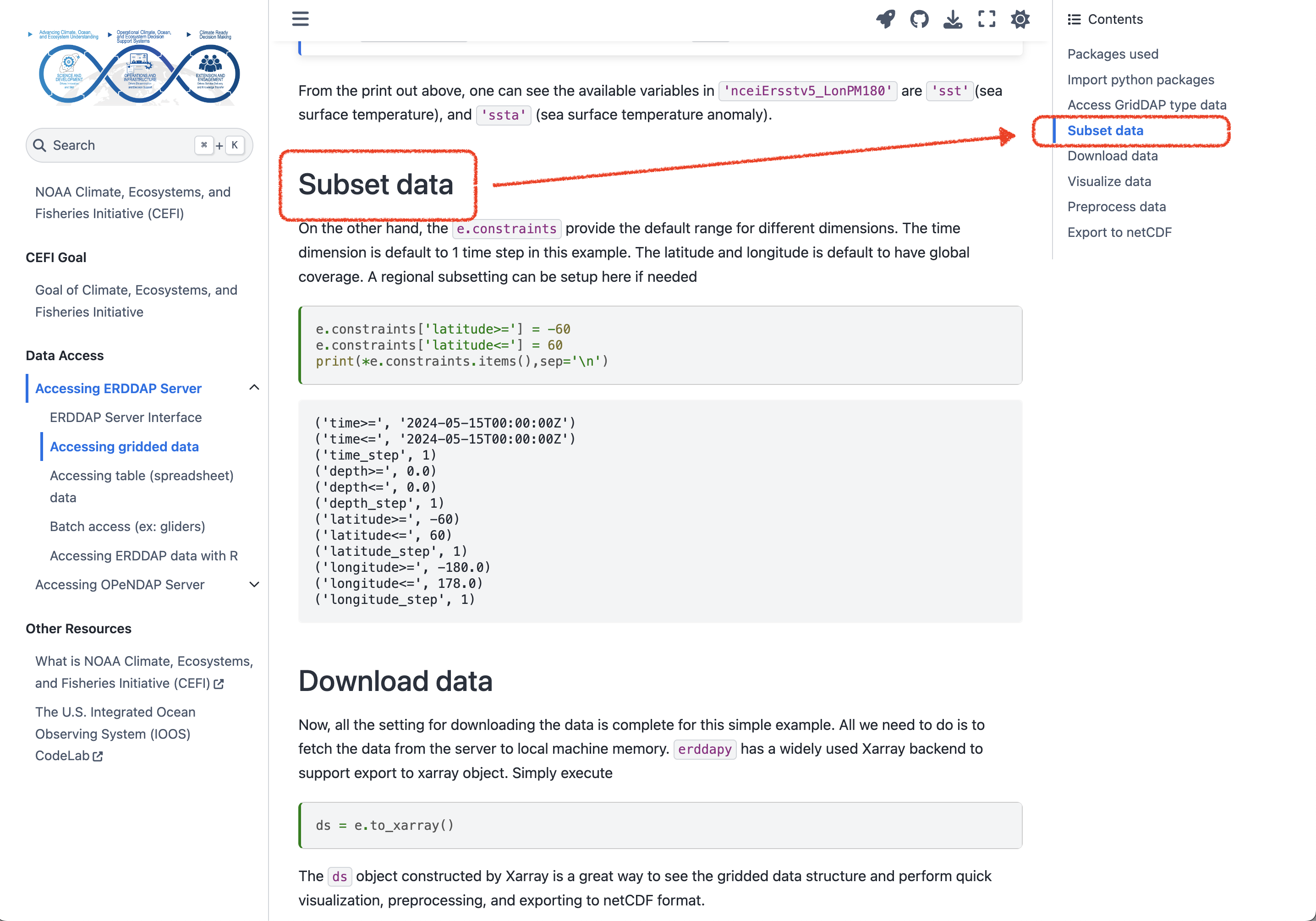Use the CEFI Cookbook#
The CEFI Cookbook aims to provide valuable information to users of varying expertise levels. We encourage users to navigate directly to specific topics and pages as needed. Our goal is to make each topic and page self-contained, providing links to associated resources when prior knowledge is required. A quick breakdown of the resources provided is shown below
What resources are provided#
Introduction to CEFI
Introduction to regional MOM6
Computational environment setup for CEFI analyses
Tutorials on accessing CEFI related data
Derivation of marine resource related indexes
Free and light cloud computation
Basic functions of the CEFI Cookbook#
Searching topic#
The search bar, located in the left column, is an extremely effective tool for locating relevant resources in the Cookbook. If you’re seeking information on a specific topic or have a particular search phrase, utilizing the search bar should be your initial approach.
The following example shows the search phrase of “regionl mom6”
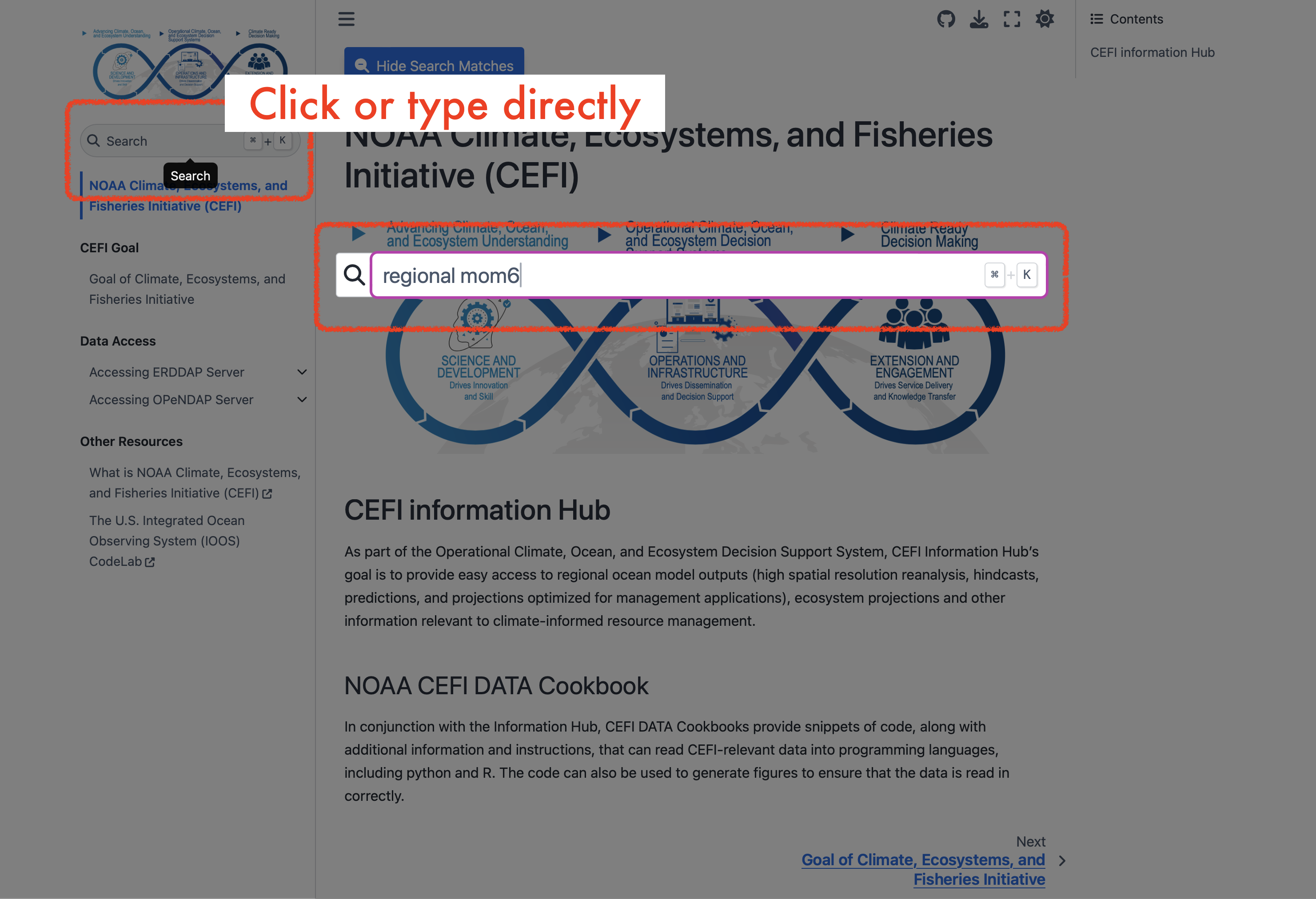
The search function is comprehensive, encompassing not only phrases found within the text content, but also those present within code snippets.
Content page#
The core content of each page is situated in the middle column. Scrolling through this middle column allows you to navigate the primary content. At the top, you’ll find three main tools (illustrated in the screenshot below), which are incredibly handy.
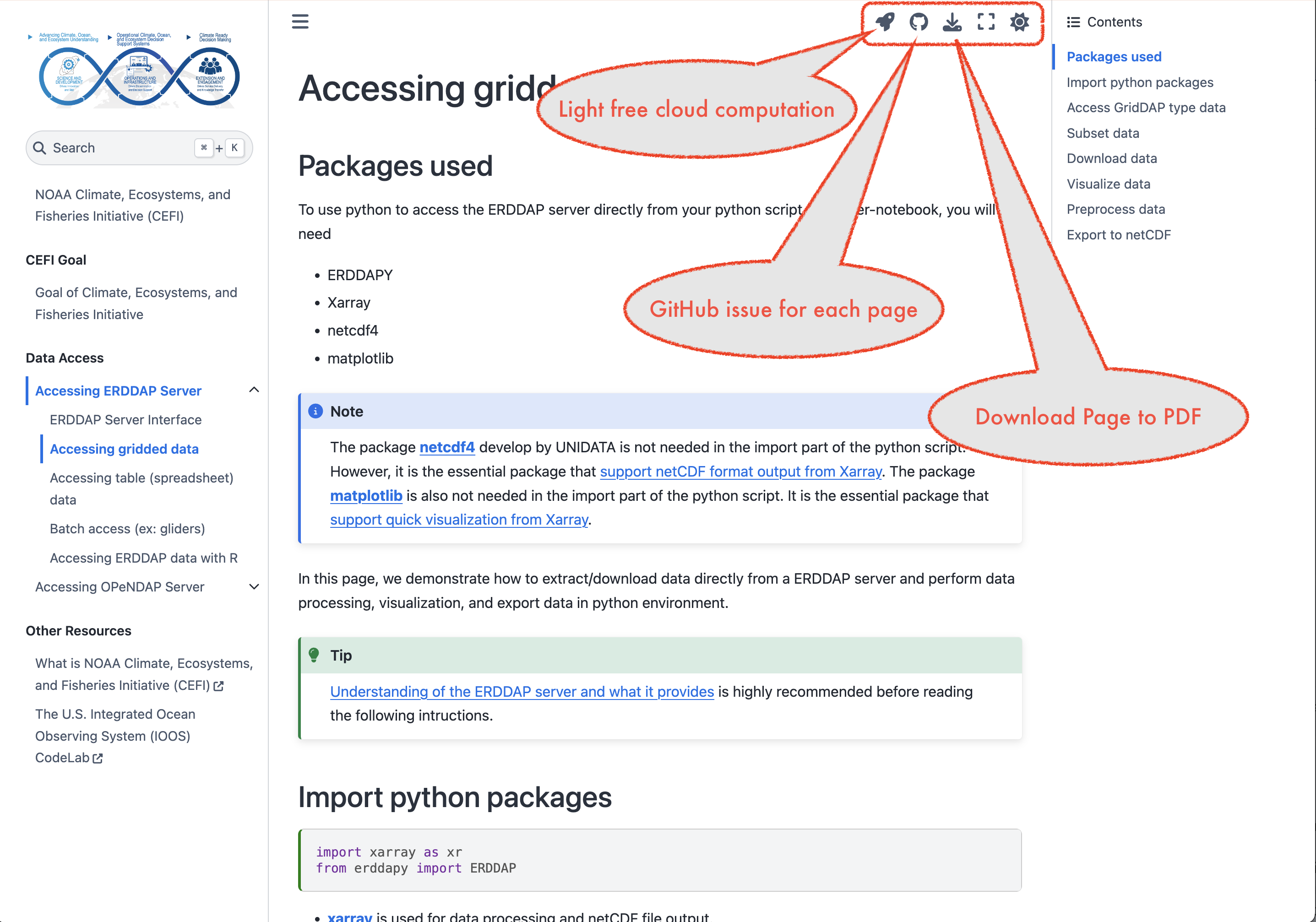
Free cloud computation#
The Cookbook interface, built on the jupyterbook platform, offers direct access to lightweight and complimentary cloud computing resources provided by Binder and Google Colab. By clicking on the rocket button (absent if the page doesn’t support interactive coding, like this one), a cloud computing session will be initiated in a new tab, presenting a JupyterLab interface when Binder is selected. Please note that the Binder platform may require some time to set up the cloud environment.
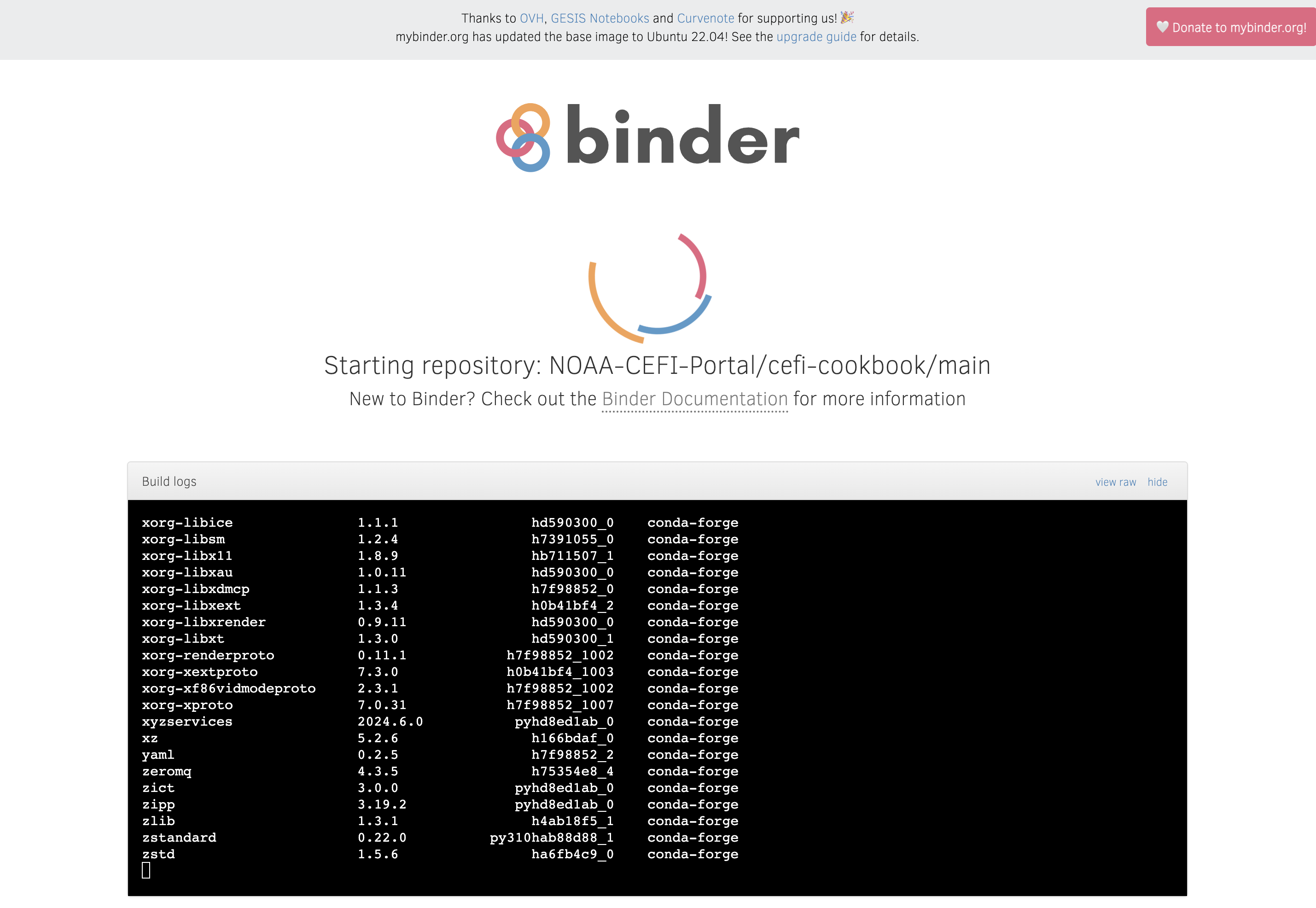
Google Colab is also an available option, although it may require the installation of additional packages before computations can be executed.

Binder is the recommanded choice for accessing the free cloud computation.
Submit GitHub issue#
On each page, users have the ability to submit a specific issue related to the page they are currently viewing. This feature encourages user contributions and facilitates easy reporting of bugs or suggestions for changes. By leveraging the principles of open science and open-source software, this function keeps the Cookbook as a “CEFI community project”.
Download for local view#
The third functionality allows for the effortless conversion of file formats from an online resource into a locally shareable and downloadable PDF. This feature simplifies the process of transforming digital content into a universally accessible format.
Like reading a book#
The design concept of the webpage by JupyterBook is to emulate the experience of reading a physical book. It ensures that the bottom of each page consistently features two buttons, leading to the previous and next pages or topics.
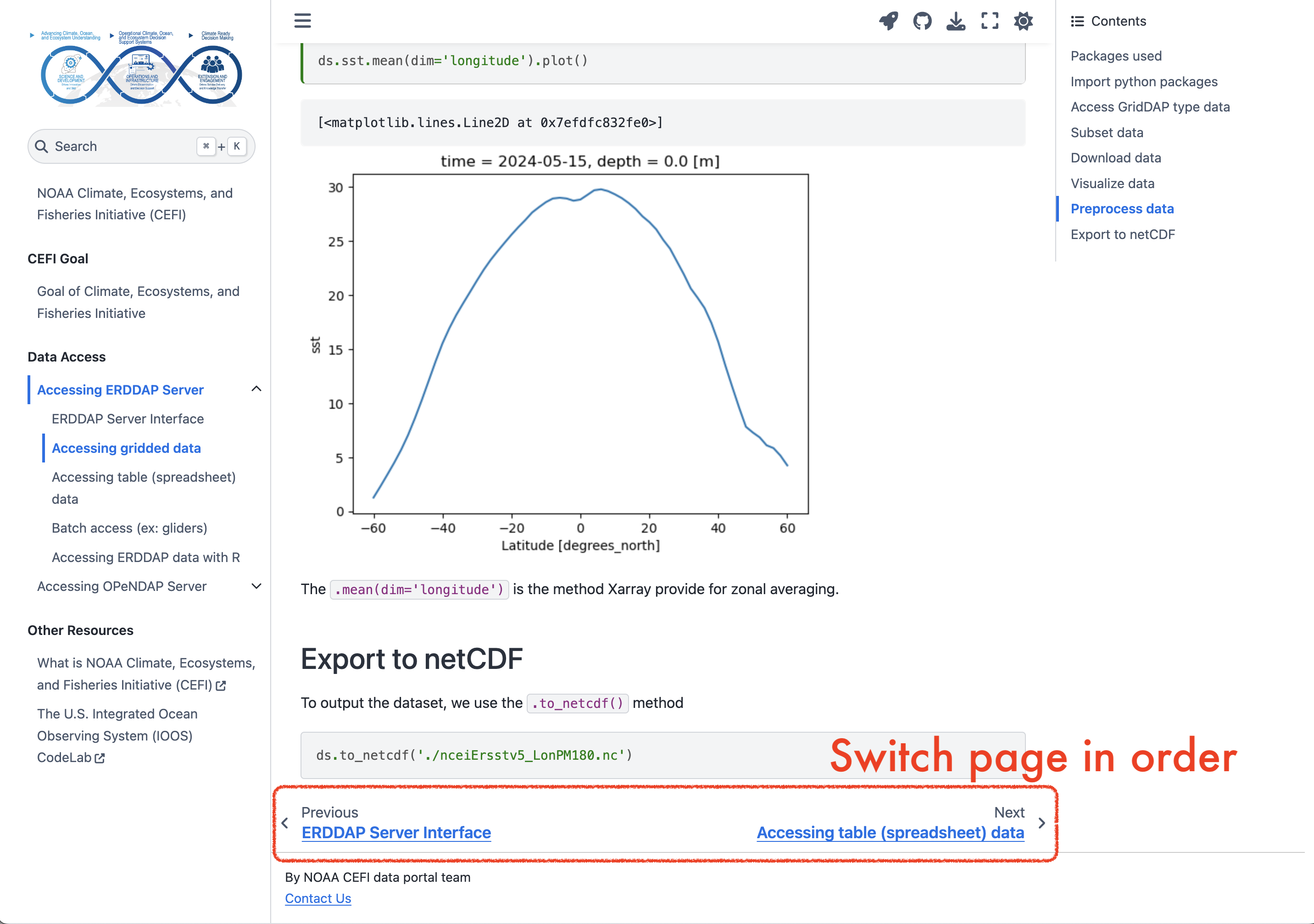
How to make suggestions and participate the development?#
We greatly appreciate contributions and feedback, especially on unclear sections and new resources. The most effective way to engage in open discussions and reach the developers of the CEFI Data Portal is by opening an issue or starting a discussion on the GitHub cefi-cookbook repository or submit issue for a specific page.


